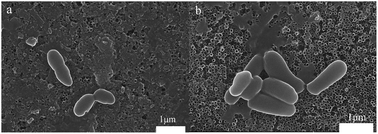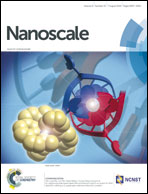Synthesis of TiO2 nanotubes with ZnO nanoparticles to achieve antibacterial properties and stem cell compatibility
Abstract
To endow titanium (Ti) with antibacterial properties, different concentrations of zinc oxide (ZnO) nanoparticles were decorated on anodized titanium dioxide (TiO2) nanotubes by a simple hydrothermal treatment method. The particle sizes of ZnO, which were evenly distributed and tightly adherent to the walls of the Ti nanotubes, ranged from 20–50 nm. Results from this study showed that Zn was released from the TiO2 nanotubes in a constant, slow, and biologically inspired manner. Importantly, the results showed that the ZnO decorated TiO2 nanotubular samples inhibited Streptococcus mutants and Porphyromonas gingivalis growth compared to control unmodified Ti samples. Specifically, S. mutants and P. gingivalis growth were both reduced 45–85% on the ZnO decorated Ti samples compared to Ti controls after 7 days of culture. When examining the mechanism of action, it has been further found for the first time that the ZnO decorated Ti samples inhibited the expression of Streptococcus mutans bacterial adhesion genes. Lastly, the results showed that the same samples which decreased bacterial growth the most (0.015 M precursor Zn(NO3)2 samples) did not inhibit mesenchymal stem cell growth compared to Ti controls for up to 7 days. In summary, results from this study showed that compared to plain TiO2 nanotubes, TiO2 decorated with 0.015 M ZnO provided unprecedented antibacterial properties while maintaining the stem cell proliferation capacity necessary for enhancing the use of Ti in numerous medical applications, particularly in dentistry.


 Please wait while we load your content...
Please wait while we load your content...